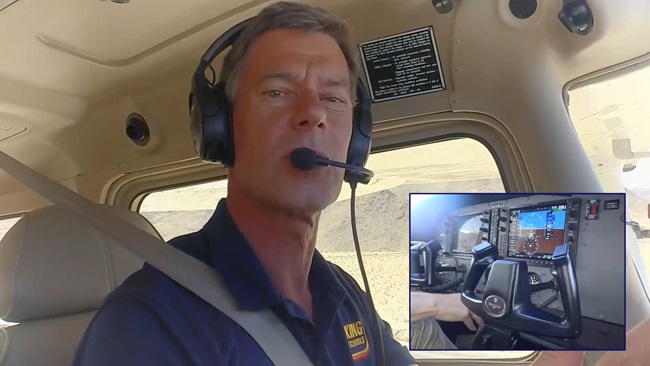A Pennsylvania pilot is crediting his personal locator beacon (PLB) with his rescue only two hours after his glider crashed in rugged mountains near Altoona, Pa., May 9.
“The fact that I’m here talking to you is pretty amazing,” said Les Dutka of Pittsburgh, who flies both powered airplanes and gliders. He said he was ridge soaring when his glider stalled and spun into the side of a mountain.
He had departed in his Schleicher ASW-20C from Ridge Soaring Gliderport in Unionville, Pa., about noon. “The winds were pretty strong,” said Dutka, who flew near Altoona and tried for a thermal so he could gain height and cross a gap. “But it was overcast and I couldn’t find an organized thermal.” He was flying lower and lower, without finding lift, and had not dropped his water ballast—which increases stall speed. “Within an instant, the thing snapped out from under me, and the next thing I knew I was upside down on the forest floor.”
Dutka was pinned underneath the cockpit. “I had my 406 personal locator beacon, which I keep strapped to my parachute strap.” He activated the PLB, and then was able to reach his cell phone and SPOT Satellite Messenger. The beacon’s signal reached a satellite and was relayed to the Air Force Rescue Coordination Center (AFRCC) at Tyndall Air Force Base, Fla. The AFRCC also contacted the Pennsylvania Emergency Management Agency (PEMA).
“Seemingly within 10 minutes, a fellow called me and said he had my signal,” Dutka said. The caller, from PEMA, told him to call 911. Dutka’s coordinates didn’t seem to get forwarded to search crews on the ground, he said. “They used air horns on their truck and I said, ‘Yes, I hear it,’ or ‘No, it’s farther away.’ Soon I heard them shouting.”
Within two hours of the crash, paramedics and members of the Sinking Valley Volunteer Fire Department reached the glider, which had struck trees and landed inverted, with its cockpit just above the ground. “It took them an hour to carry me in the stretcher to the head of the road where they could park the jeep,” Dutka said.
“Our sport, like many others, has become very technology heavy,” he said. “With the personal devices, I made the decision that the couple of hundred dollars that you spend could really pay off.” Dutka said he “absolutely” felt that investment paid off Sunday.
“I felt relatively unhurt, considering what happened,” he said. Dutka suffered facial lacerations, a fractured ankle, and some broken bones in his feet. It helped to have the right equipment, he added. In addition to the PLB and SPOT, he had an older emergency locator transmitter.
“In the airplane I had a 121.5 ELT. I had planned on upgrading to the 406 [MHz], but there were issues with the antenna placement.” The ELT did activate in the crash, he learned later from the Civil Air Patrol.
The SPOT also worked; the service called somebody whose contact information Dutka had provided when he registered the unit. In the future, he said, he will activate the SPOT and track his flight on the Soaring Society of America’s website, which would have given the location of his last position.
“What I don’t know is, if I had not been able to reach a cell phone or was incapacitated, what would have happened.” He said that in the future, he will look for an aircraft-mounted 406-MHz ELT—and put all his portable devices, including his cell phone, in a chest pouch or other container that won’t interfere with his parachute or harness. “If they’re not within reach when you crash, they won’t do you any good,” he said.
“This save is a prime example of the importance of 406-MHz frequency emergency locator transmitters and personal locator beacons in all aircraft,” said Maj. Bill Kennedy, AFRCC flight commander. “Although the 406 is a little more costly, it is more accurate when it comes to locating a PLB or ELT signal, especially when it is GPS-encoded as was the case of this individual's PLB.” The SARSAT system stopped monitoring the 121.5 MHz frequency in February 2009, he noted.
Dutka has downloaded his flight data and is analyzing it. “We in the soaring community are very self-critical,” he noted.



